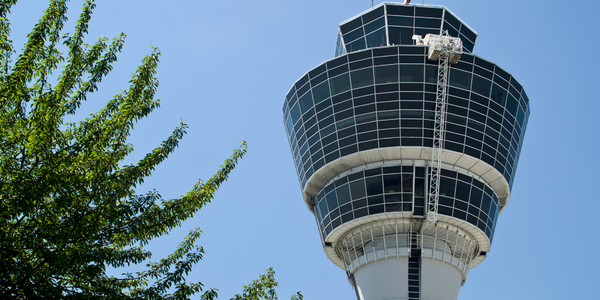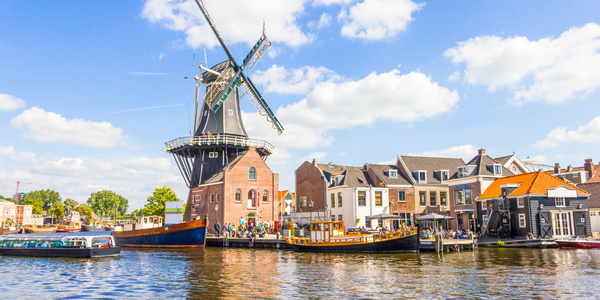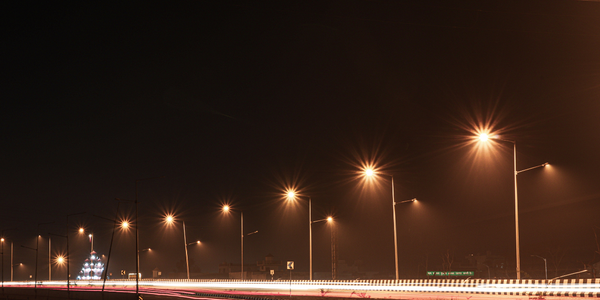Reducing Congestion and Optimizing Signal Timing Systems With Miovision Solutions
公司规模
Mid-size Company
地区
- America
国家
- Canada
产品
- Miovision TrafficLink
- Surtrac Adaptive Traffic Signal Control System
技术栈
- Adaptive Signal Control
- Traffic Data Analytics
实施规模
- Pilot projects
影响指标
- Cost Savings
- Environmental Impact Reduction
- Productivity Improvements
技术
- 分析与建模 - 实时分析
- 功能应用 - 远程监控系统
适用行业
- 城市与自治市
- 运输
适用功能
- 物流运输
- 商业运营
用例
- 智慧城市运营
- 交通监控
- 过程控制与优化
服务
- 数据科学服务
- 系统集成
关于客户
The City of Peterborough, located in Ontario, Canada, is a mid-sized city grappling with traffic congestion on its busiest streets. Lansdowne Street, a 1.75 km corridor, is a major commercial area with a high volume of traffic, carrying between 23,000 and 29,500 vehicles daily. The city is committed to improving public road safety and reducing greenhouse gas emissions, aligning with global initiatives. To address these challenges, the city sought innovative solutions to optimize traffic flow and enhance the overall level of service on its roads.
挑战
Traffic congestion is a significant issue in cities worldwide, leading to increased accident risks and CO2 emissions. The City of Peterborough, Ontario, faced severe congestion on its busiest streets, particularly on Lansdowne Street, a high-capacity arterial road. Traditional Time-of-Day (TOD) signal timing systems were inefficient, requiring significant labor and budget for configuration changes. The city needed a more adaptive and efficient solution to manage traffic flow dynamically and reduce congestion, emissions, and user costs.
解决方案
The City of Peterborough implemented Miovision TrafficLink and Surtrac adaptive traffic signal control systems as part of a pilot project on Lansdowne Street. These systems collect continuous data on traffic volumes, speeds, and congestion, allowing real-time adjustments to signal timings. The adaptive signal control software uses multiple detection zones to simulate vehicle models approaching intersections, coordinating with neighboring signals for optimal traffic flow. This approach maximizes throughput during peak times and minimizes queuing during lighter traffic, automatically switching objectives based on actual demand. The city conducted 'ON-OFF' testing, alternating adaptive control with traditional TOD control, to evaluate performance improvements.
运营影响
数量效益

Case Study missing?
Start adding your own!
Register with your work email and create a new case study profile for your business.
相关案例.

Case Study
Turning A Stadium Into A Smart Building
Honeywell created what it called the “intelligent system” for the National Stadium in Beijing, China, turning the venue for the opening and closing events at the 2008 Summer Olympics into a “smart building.” Designed by highly controversial artist Ai Weiwei, the “Bird’s Nest” remains one of the most impressive feats of stadium architecture in the world. The 250,000 square meter structure housed more than 100,000 athletes and spectators at a time. To accommodate such capacity, China turned to Honeywell’s EBI Integrated Building Management System to create an integrated “intelligent system” for improved building security, safety and energy efficiency.
.png)
Case Study
Smart Street Light Network (Copenhagen)
Key stakeholders are taking a comprehensive approach to rethinking smart city innovation. City leaders have collaborated through partnerships involving government, research institutions and solution providers. The Copenhagen Solutions Lab is one of the leading organizations at the forefront of this movement. By bringing together manufacturers with municipal buyers, the Copenhagen Solutions Lab has catalyzed the development and deployment of next-generation smart city innovations. Copenhagen is leveraging this unique approach to accelerate the implementation of smart city solutions. One of the primary focus areas is LED street lighting.

Case Study
Airport SCADA Systems Improve Service Levels
Modern airports are one of the busiest environments on Earth and rely on process automation equipment to ensure service operators achieve their KPIs. Increasingly airport SCADA systems are being used to control all aspects of the operation and associated facilities. This is because unplanned system downtime can cost dearly, both in terms of reduced revenues and the associated loss of customer satisfaction due to inevitable travel inconvenience and disruption.

Case Study
IoT-based Fleet Intelligence Innovation
Speed to market is precious for DRVR, a rapidly growing start-up company. With a business model dependent on reliable mobile data, managers were spending their lives trying to negotiate data roaming deals with mobile network operators in different countries. And, even then, service quality was a constant concern.

Case Study
Buoy Status Monitoring with LoRa
The Netherlands are well-known for their inland waterways, canals, sluices and of course port activities. The Dutch Ministry of Infrastructure indicates that there are thousands of buoys and fixed items in and near water environments that would profit from IoT monitoring. One of the problems with buoys for example, is that they get hit by ships and the anchor cable breaks. Without connectivity, it takes quite some time to find out that something has happened with that buoy. Not to mention the costs of renting a boat to go to the buoy to fix it. Another important issue, is that there is no real-time monitoring of the buoys at this moment. Only by physically visiting the object on the water, one gains insight in its status.







